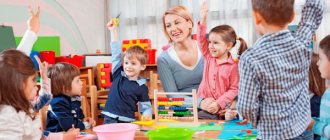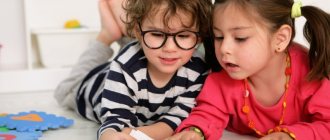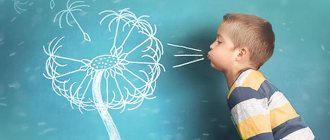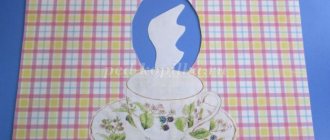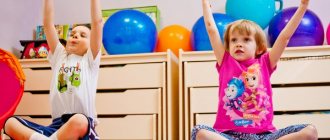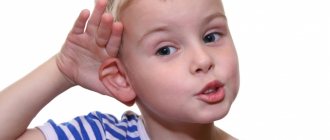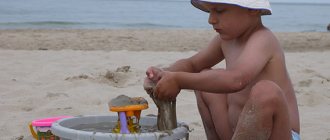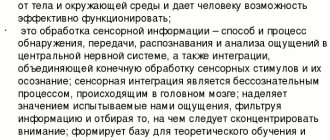Hello, dear readers!
Musical development must be present in a child’s life. First of all, children really like this and in the process of musical games they can develop imagination, memory, imagination, a sense of rhythm and tact, hearing and intelligence, and stimulate emotional development.
Through dance movements, children strengthen their muscle corset and coordination of movements, and simple songs will help the child develop speech and acquire the first vocal and communication skills.
Zheleznov’s method of early child development, let’s take a closer look.
What is this
Volkova G.A., Shashkina G.R., Ekaterina Zheleznova studied the positive impact of rhythmic movements on speech together with the pronunciation of words and correct breathing in Russia. From their point of view, logorhythmics is a complex system of motor exercises aimed at eliminating speech anomalies in preschoolers and developing motor skills.
V.A. Gilyarovsky and N.A. Vlasova defined what logorhythmics is differently. In the mid-20th century, they studied the causes and methods of correcting logoneuroses. The main attention was paid to the word as a way to solve speech disorders. Rhythm and movement were given a secondary role. But they noted the usefulness of speech therapy rhythms for intellectual and aesthetic development.
In other words, logorhythmics is an activity that includes marching to rhythmic music, walking to a count, and running. Simultaneously with physical activity, the task is to control breathing, pronounce phrases, sing in a certain intonation, loudly or quietly, etc. Classes are held in an entertaining format, in a group or individually.
The benefits of the technique
Thanks to it, correct speech is produced, because classes include elements of imitation of different sounds.
For example, those made by different animals. Or repeated repetition of different words, memorization of simple but useful rhymes for training the speech apparatus.
The child develops motor skills because he has to use different objects in the exercises.
He receives many tactile and auditory sensations - the development of sensory organs occurs simultaneously and comprehensively.
During the exercises, the child learns to act in a team and establishes communication with other children. If we are talking about a home environment, then he can maintain close contact with his mother.
This technique is well suited if children have neurological disorders. Music calms and relaxes, puts the child in a calm, positive mood.
Zheleznov's methods
Zheleznova’s finger exercises are one of the ways to conduct finger gymnastics and develop fine motor skills in a playful way. These games are ideal for children from two to five years old. All games are accompanied by funny songs and rhymes.
Playing finger games by Ekaterina Zheleznova, children receive various sensory impressions, learn to focus on any specific activity, and train attentiveness. The heroes of such games - rain and sun, butterfly and spider, goat and hare - delight 1.5-2 year old children. These characters help teach children to count and understand the meaning of the words “above”, “below”, “right”, “left”, “above”, “below”. How much the little one will like the game depends on how it is presented to adults. For the little ones, calmness, affection, care and caution in touch are of great importance.
For three to five year old children, the speech and expressiveness of an adult’s facial expressions are important, therefore, in order to recite a poem expressively, you will need to learn it by heart.
Advice The movements made by the right and left hands are controlled by different hemispheres of the brain. Therefore, first teach your child to perform the exercise with one hand, then with the other, and only after that with both at the same time.
Games where you need to act with your fingers in turns, for example, “2 red cockroaches” or “2 plump piglets,” can only be handled independently by children who are already four or five years old. A child under this age performs exercises only with the help of an adult.
Disadvantages of the method
Dancing, games and funny songs will put any child in a positive mood. But if you take a closer look, you can identify some points that are rather small nuances than shortcomings. The child is asked to strictly follow the proposed action plan. The right to choose and independently invent movements is not given. There are many complex repetitions and rhymes that little children do not immediately begin to learn. Ekaterina Zheleznova, whose methodology is used in many development centers, together with her father, composed many original songs, but mostly they are of the same type. The same words are often repeated, for example: bunny or bear and their actions, sleep, take a walk. Although for very young children it is precisely this repetition of the same type of words that is preferable.
Any parent, even without a musical education or understanding of musical literacy, can, based on this technique, comprehensively develop their child and instill in him a good taste in music.
Goals and objectives
The main goal of speech therapy rhythm for preschoolers is the correction and prevention of speech disorders by improving motor skills. Logorhythmics also has other related goals - health improvement, physical and spiritual education.
A lesson with elements of logorhythmics poses the following tasks for the teacher:
- Breathing development
- Correction of speech disorders
- Training in control of movements, speech, functioning of the organs of articulation and breathing
- Improving coordination
- Development of all types of memory, attention, spatial orientation
- Cultivating a sense of rhythm
- Reinforcing spatial concepts
- Introduction to spiritual values (music)
- Learning to sing and pronounce tongue twisters
- Expanding your horizons
- Increasing vocabulary
Complexes for children 2-3 years old
Logorhythmics for kids involves the creation of special sets of exercises and entertaining activities. Games and exercises are performed using the method of imitation.
Animals
- Helps to get acquainted with the world of animals, insects, birds. Classes involve reading poetry, imitating walking movements, and animal sounds.
- Kids can walk like a bear, flap their wings like a swan, a sparrow, walk like a duck, etc.
- Onomatopoeia is required. The teacher asks: “How does a goose scream when it flies?” Pupils should wave their arms and answer: “HA-HA!”
- Pictures of animals and birds are used to help the speech therapist, teacher and parents.
- You can use the story with the bear and the cone:
The clumsy bear walks through the forest, collects cones and puts them in his pocket...
Children walk with their teacher, roar like a bear, and collect pine cones.
Vegetables and fruits
- They expand their knowledge of the world around them, the colors of fruits, and introduce them to their names.
- The following exercises are used for the lesson:
Salt the cabbage. The poem is read:
We cut the cabbage, cut it, We chop the cabbage, chop it...
Children make movements with their hands, pretending to be a knife or a hatchet.
We salt the cabbage, salt it, We press the cabbage, press it.
And we'll grate the carrots.
They depict how they stir, salt, and squeeze chopped vegetables.
- Let's go to the garden
Pictures depicting garden vegetables and garden fruits are used. First, you should have a conversation, tell preschoolers about where vegetables and fruits grow, what color they are, how they smell, etc.
Then a scene of a trip to the garden to collect the harvest is depicted. You can use fruit toys that the children will pick from trees and collect from beds. A competition game is suitable: children are divided into 2 teams, toy fruits are laid out around the room. The teacher asks each team to find as many fruits from one group as possible: for example, vegetables. Children take turns looking for them and bringing them to their basket.
Methodology of Ekaterina Zheleznova
The author's logorhythmics training program includes musical, speech, and physical exercises at the same time. The baby dances, imitates sounds, sings.
To play the game you need manuals, backing tracks with recordings of musical accompaniment. Zheleznova’s logorhythmics is used for the development of speech and phonemic hearing in children 3-4 years old and older.
When can I start?
The Zheleznov development method is designed for children from 6 months to 7 years. As a rule, babies are offered comfortable pillows on which they can wave their arms and legs to the beat of the music. Older children are already walking around the entire perimeter of the room. But even if the baby is still very small, the mother can always start playing with him. All games fit perfectly into a child’s daily life. Here the mother carries the child to wash and hums: “Water, water, wash my face...” Or, bending and unbending the baby’s legs, she says: “Bear-toed bear...” All this is the initial stage of introducing the child to a sense of rhythm and musicality.
How to practice
Recommendations for playing games:
- Pronounce the poems as expressively as possible, lowering and raising your voice while simultaneously performing the movements.
- It will be good to sing poetry to some melody.
- Do all the exercises with your baby, this will give you the opportunity to create the necessary mood, help the baby remember the movements and do them correctly.
- After several lessons, children usually begin to repeat parts of phrases after adults, and a little later - the entire poem, while correlating the movements with the spoken words.
- Don't be too demanding about your exercises. It won’t be easy for your child to recite a poem while doing the exercise at the same time. It is very important not to initially discourage your child from studying.
- Start with two or three games, gradually adding new ones. Over time, the baby will develop favorite exercises that he will be happy to return to many times.
- Under no circumstances force your child to play; try to find out the reason for the refusal and, if possible, eliminate it.
- Try not to focus on your child’s mistakes when doing exercises. But be sure to praise your child for the slightest success, this will push him to more significant achievements.
All finger games by Katya Zheleznova are carried out in three ways:
- the adult performs the movements, and the child observes;
- the adult makes movements with the baby’s hands;
- The baby makes movements with his own hands.
logorhythmics for kids zheleznova
In the series of posts I planned on speech development, I highlighted logorhythmics as a separate item. And this is truly an important point. But today I want to talk not only about logorhythmics, but also about the musical development of the child as a whole. About how you can listen to music with your baby so that you can really hear it.
I won’t write much about logorhythmics here. My article with a theoretical presentation of the issue was published on the website “Club of Passionate Mothers”.
I'll just add a few useful links here.
— Useful post by Alena about practicing logorhythmics with children under one year old.
— Card index of logorhythmic exercises
- The usual well-known poems with movements like “The bear is clumsy”, “The little gray bunny is sitting...”, etc. Children are more willing to accept it in the song version. Musical versions of these songs can be easily found and downloaded on the Internet.
— And sometimes in methodological descriptions it is not always clear what and how to do. Watch videos of logorhythmic exercises, for example, by Zheleznov. You can even show it to your baby once. They repeat after children more readily than after their mother.
And now about musical development.
It’s very good when you know how to do something, do it well and understand it. You definitely need to teach this to your child. And if you don’t know how, then you need to learn with your child. And it's so great! Before Ulyanka was born, I didn’t listen to classical music at all, didn’t understand it, couldn’t distinguish one composer from another. But I really wanted my child to become familiar with the Beautiful, and the classics have been playing in the background since her birth. But a period came when the realization came that music in the background was not enough. It is necessary to give impetus to the child to perceive its meaning. At the moment I have found 4 ways to do this.
1. Listen to music and compose stories, fairy tales. Do this together with a talking child.
But sometimes there is no imagination, or there is no inspiration, or the fantasy is over. No problem. It turns out there are books with ready-made stories based on classical music. For example, this
Stories based on compositions from Tchaikovsky's "Children's Album". I'll show you a couple of spreads
2. Cartoons set to classical music. By the way, there is a cartoon based on the same “Children’s Album”.
And here is another list of cartoons.
3. Drawing to music. This is an incredibly wonderful way to listen to music. And no matter how many times we try it, I am amazed at the results. To different music, the child draws different images and uses different colors. I wrote about one of our drawings here.
4. Audio tales with high-quality background music. There are quite a lot of them. But the best are, of course, the project of the Moscow State Philharmonic - fairy tales with orchestra. It's easy to find on the Internet.
Of course, you need to listen not only to classics, but to a variety of styles of music. The sense of rhythm is perfectly acquired through logorhythmic exercises. Auditory memory can be developed with various musical lotto games (I wrote about our favorites here). You can also create musical corners at home (I wrote about ours here).
How do you listen to music with your kids? I am especially interested in getting to know the classics. I'm really looking forward to your advice.
Complex for children 3-4 years old
Logorhythmics in kindergarten for children over 3 years old may include the following complexes:
- Finger gymnastics
You need to stretch the fingers of both hands, make locks, depict boats, household items, etc. At the same time, poems are recited on various topics:
- Who sings what?
The cat sings a song: Meow! Meow! (children petting an imaginary cat).
The clock sings: Tick! So! (the handles represent ticking arrows).
Piglet grunts: Oink! Oink! (fingers make a patch - a circle).
The cabin in the river does not sing: Mmmmm! Mmmm! (press their lips, cover their mouth with their hands), etc.
- Mushrooms
Children stand in a row and walk through the forest to look for mushrooms. Massage your fingers without ceasing to walk. The teacher counts, creating a rhythm.
Top-top - five steps (children step to the rhythm of the poem), And in the basket there are five mushrooms (we count the fingers on the hands), Amanita is red (we stretch the index finger), It is very dangerous. And the second is a fox (we touch the next finger), a red pigtail. Pink ear (touch the ears) The third mushroom is the trumpet mushroom. And the fourth mushroom is the morel (tugging at the ring finger), a bearded old man. Well, what is the fifth mushroom? White! (put your hands in a lock and play with your fingers).
- Singing
Music lessons are used. Children learn breathing exercises. It is not necessary to sing songs; you can hum individual sounds, imitate animals, while doing physical exercises at the same time.
- Outdoor games to music
Logorhythmic exercises are performed with musical accompaniment. Words and movements are learned, attention and memory develop. You can use balls, passing them around to each other in a circle, chairs, toys to hide and quickly find, etc. Logorhythmics tasks for children 3-4 years old can be slightly complicated and used for games with the older, preparatory group.
About the authors
Sergey Stanislavovich and Ekaterina Sergeevna Zheleznov (father and daughter) developed their own method for the early development of children.
Sergey Stanislavovich Zheleznov is an experienced teacher (pianist and composer) of children's music schools in Moscow, who organized the early development studio “Music with Mom”.
Ekaterina Sergeevna Zheleznova is a follower of her father, graduated from a music pedagogical college and a Graduate School of Advanced Studies, and is now a teacher and methodologist - the head of her father’s original school.
Initially, this program was a preparatory course for children aged 4-6 years to enter music schools, where they learned notes, first songs and played musical instruments.
Later, the technique began to expand its position and it was decided to deepen it. In the mid-90s, there was practically no musical material to engage children under 3 years old.
Then the Zheleznovs began to independently write small songs that kids could understand, songs with movements, and refine Russian nursery rhymes. This is how new collections were born.
The program is designed for different ages. It can also be used for very small toddlers from six months of age, when they can dance in their mother’s arms. Of course, here they are only listeners.
And at the age of about a year they can already dance. Then, older ones can perform songs with movements, first with adults, then on their own.
Complex for children 5-6 years old
- Movement exercises It is better if the children themselves come up with movements to the poem that the teacher reads:
We will go to the forest today (children are walking), Who climbed the tree? (raise their heads up) Cuckoo? Cuckoo? (put hands to lips, repeat words) I’ll find you anyway
- Physical warm-up
Physical education to music. The poetic form of commands is used. Children gradually learn it by heart and pronounce it themselves.
The mouse ran quickly (we move one after another, slowly), The mouse wagged its tail (we repeat the movements of the animal), And dropped the egg (tilt down - lift up), Look, oh, it broke (we shake our heads, put our palms to our cheeks).
Logorhythmics in preschool educational institutions is used in any lesson: physical education, speech therapy, music. Teachers should pay attention to the pronunciation of auxiliary poems and words by children, and to the correct breathing of children during exercise.
Recommendations for conducting classes
- Shape the lesson load according to the age and development level of preschoolers
- Give a lesson in the afternoon
- Change the topic of the lesson every week
- When selecting material, rely on lexical topics
- Use fairy tales and cartoons for speech and music exercises
- Exercise every day
- Accurately and clearly demonstrate to children the movements of their hands, body, and lips during phonation. Monitor the quality of assignments.
Sources
- https://orechi.ru/razvitie-rechi/logoritmika
- https://Razvivashka.online/metodiki/palchikovaya-gimnastika-zheleznovoy
[collapse]

